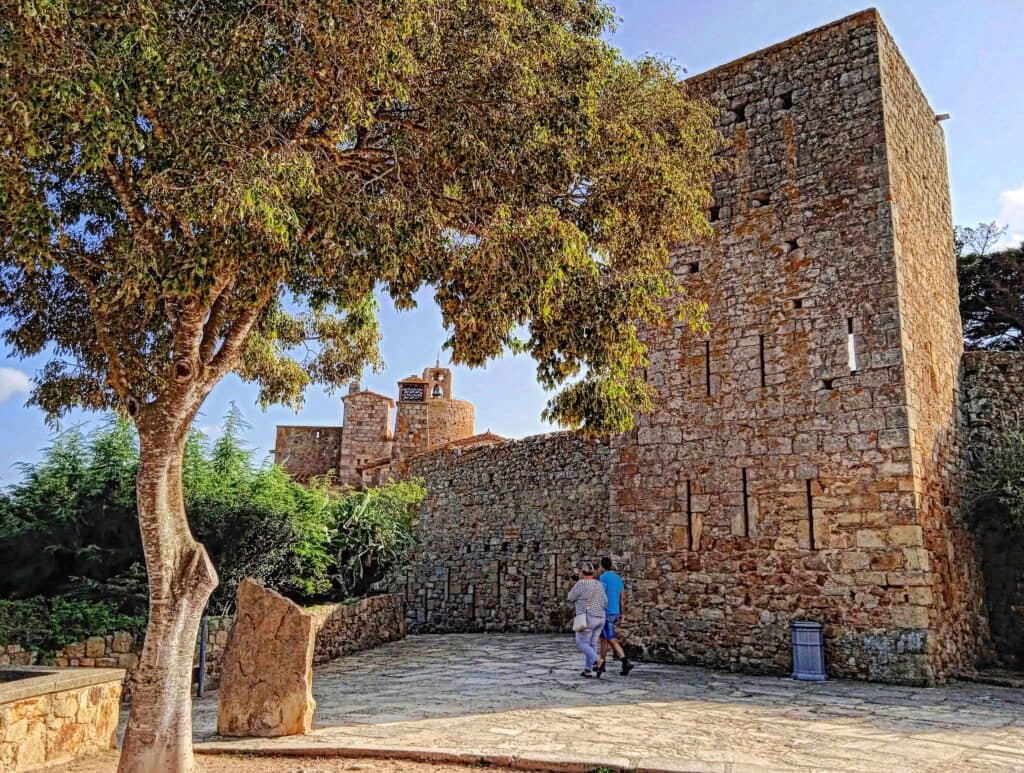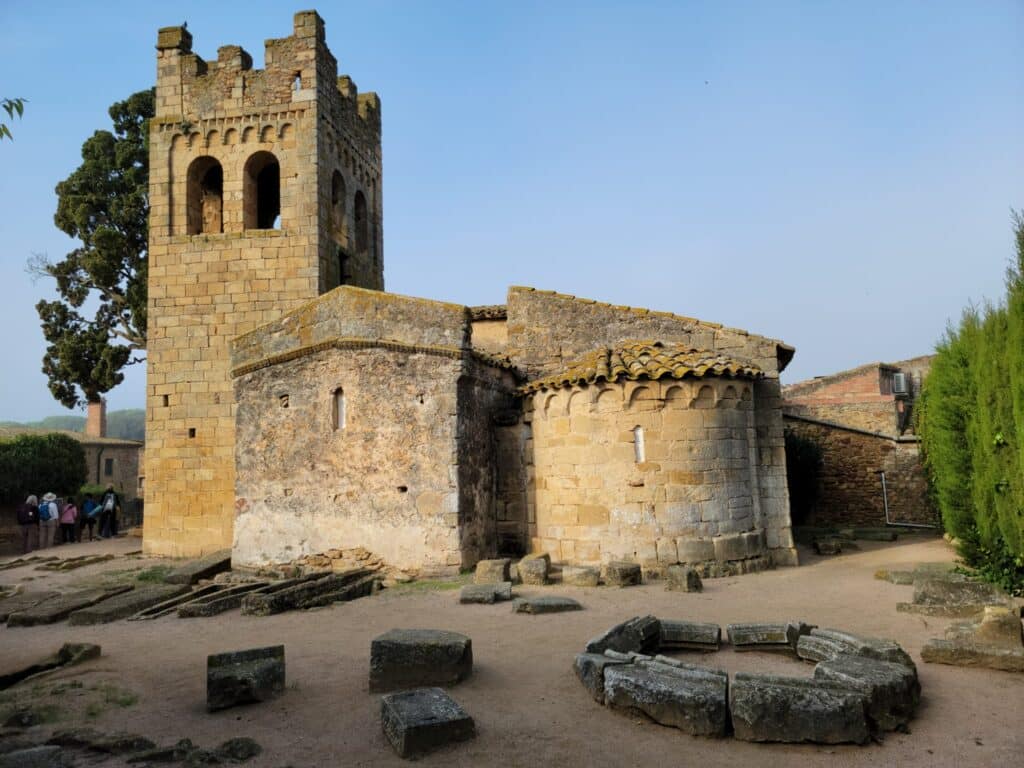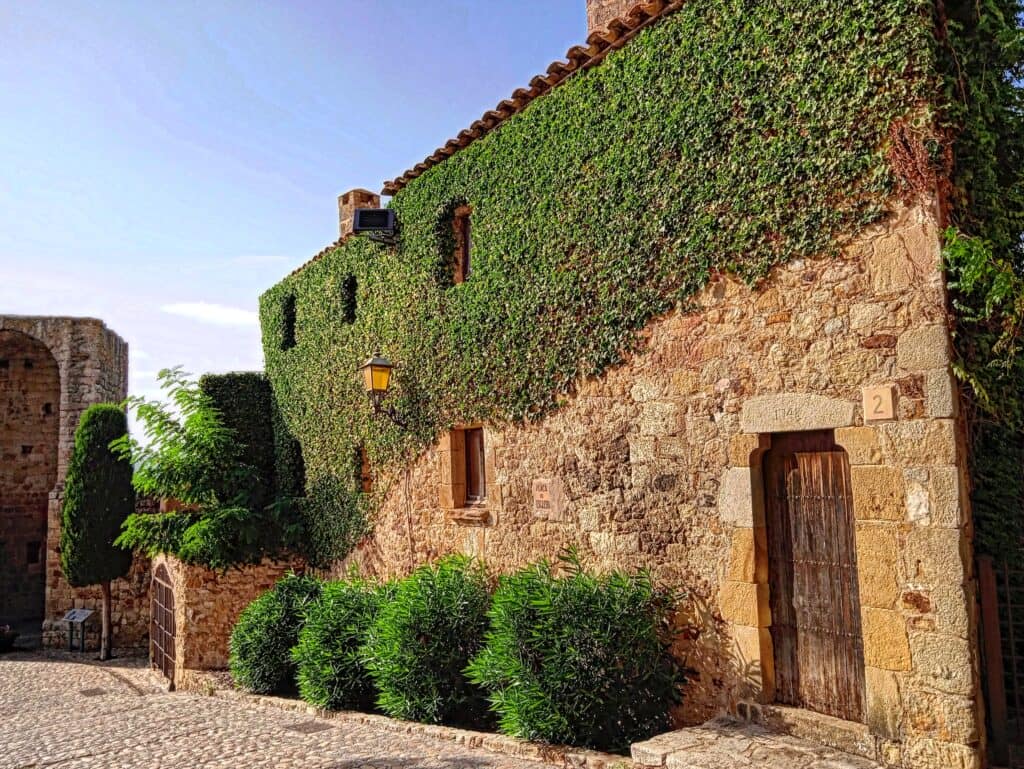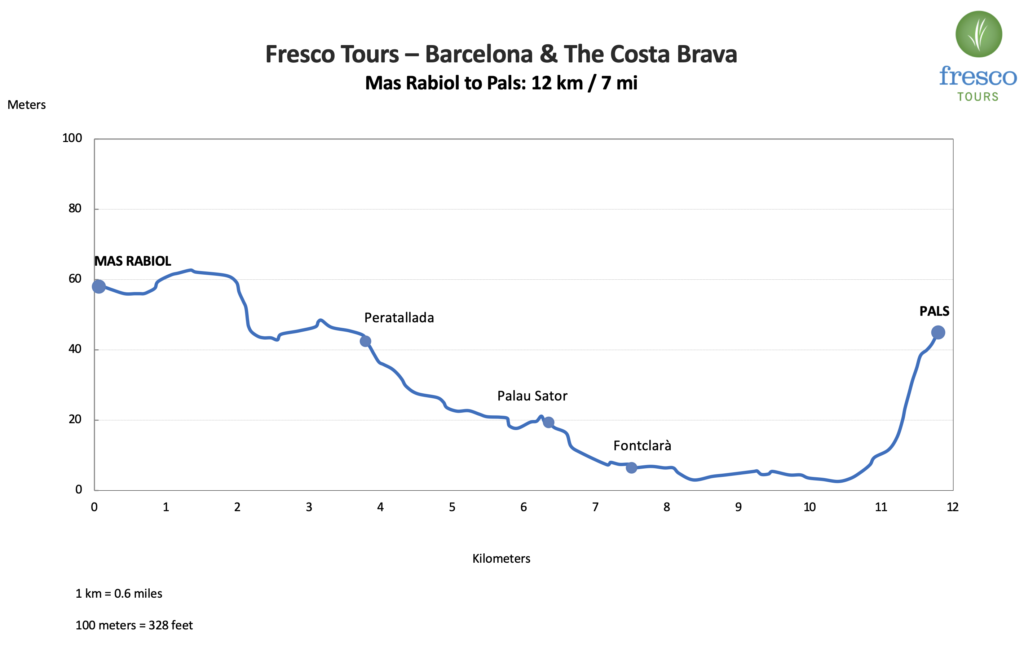The route from Canapost and Palau Sator to Pals is a picturesque journey through the medieval heart of Empordà in Catalonia, Spain. Starting from Canapost, a small village known for its rural charm and historical architecture, the trail leads through gentle countryside landscapes, olive groves, and vineyards typical of the region.
Palau Sator, a beautifully preserved medieval village, offers a glimpse into Catalonia’s past with its ancient stone houses and narrow streets. The route continues to Pals, another medieval gem renowned for its well-preserved Gothic architecture, including the impressive Romanesque tower and the iconic Torre de les Hores (Tower of the Hours).
Pals
The medieval village was built on the hill above the marshy area that today is solid land. The name Pals comes from the latin word “Palus” (marshy area), historians think that the area was populated in the Roman era, however, the first document mentioning Pals is from the year 889 AD after a donation by the French King Odo of France.
The medieval village survived up until the 20th century when during the Spanish Civil War (1936-1939), Pals was severely destroyed and abandoned. Later on, the local wealthy Doctor Jaume Pi I Figueres started its restauration that lasted for 30 years and made of Pals one of the most beautiful gothic villages in the country.

Palau Sator
The quiet rural village of Palau Sator has managed to keep its medieval architecture. The town’s wall protects the rural village the entrance to which is through a gate underneath the 20 meters clock tower still standing and was once part of the ancient castle of Palau Sator.
Peratallada
Peratallada is one of the best examples of medieval architecture found in Catalonia, with its rural character intact and faithful to its architectural and urban origins.
The village still retains its medieval urban layout, from the square of Les Voltes with its unique arcades, to the narrow stone alleways loaded with interesting elements of popular architecture. The ground floors in the traditional houses of Peratallada are lined with stone vaults, used as stores, barns and cellars, while the upper floor is dedicated to daily life (some have a backyard or patio as well).

Peratallada’s original name was Petra Scissa, “carved stone” in Latin, as the sandstone it sits on was literally carved to build the castle, walls, and moats. During the castle’s restoration, traces of a pre-Roman settlement (Bronze Age – 6 B.C.) were found. The first documents mentioning the House of Peratallada date back to the 11th Century. At that time, Peratallada was one of the most important towns in the area of today’s Baix Empordà, but in the 13th century, it was absorbed by the nearby village of Cruïlles following the marriage of Guillema de Peratallada and Gilabert de Cruïlles.

Canapost
An archaeological excavation in 2004 and 2005 revealed a 10th-15th century medieval necropolis around the little Romanesque Church of St Esteve in Canapost. In the site, 85 anthropomorphic tombs of sandstone were found alongside pottery and even scallop shells brought by pilgrims from Santiago de Compostela more than 600 years ago.






